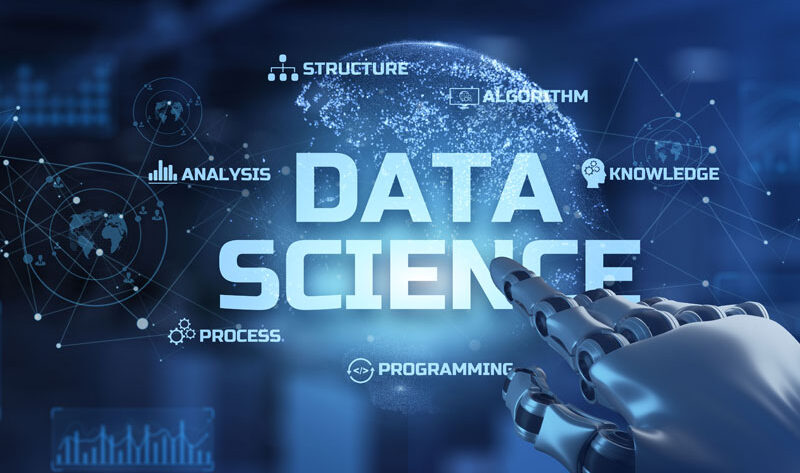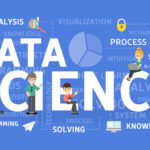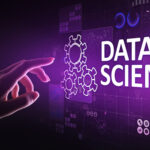In a world where data is growing at an exponential rate, businesses, researchers, and organizations are constantly faced with the challenge of transforming vast amounts of complex information into something comprehensible and actionable. Data visualization has emerged as a crucial tool in this process. It enables individuals to make sense of numbers, trends, and patterns by presenting data in a visual format—charts, graphs, and interactive dashboards—that makes complex insights easily understandable.
Data visualization isn’t just about creating visually appealing graphics; it’s about telling a story with data. In this article, we will explore the importance of data visualization, its key components, the types of visualizations commonly used, and how it can be applied to various sectors. We will also discuss the principles that guide effective data visualization, as well as some of the challenges and future trends in the field.
1. What is Data Visualization?
At its core, data visualization is the graphical representation of data and information. By using visual elements like charts, graphs, maps, and infographics, data visualization allows people to see trends, patterns, outliers, and correlations within datasets. This makes it easier to understand complex data and derive actionable insights.
For example, instead of reading through a list of numbers, data visualization might use a bar chart, line graph, or pie chart to show the relationship between those numbers in a more intuitive and accessible way.
Key Elements of Data Visualization:
- Charts and Graphs: Line charts, bar charts, pie charts, scatter plots, and histograms are some of the most common forms of data visualizations used to represent data points and trends.
- Maps: Geospatial visualizations such as heat maps or choropleth maps are used to display regional data in a spatial format.
- Dashboards: Interactive dashboards allow users to manipulate and explore data from multiple sources in real-time, providing a dynamic view of key performance indicators (KPIs) and other relevant metrics.
- Infographics: These are highly visual, often interactive representations that blend text, charts, and graphics to tell a comprehensive data-driven story.
The goal is to help people not only understand the data but also to make decisions based on that data, whether they are business leaders, researchers, or general audiences.
2. The Importance of Data Visualization
Data visualization plays an indispensable role in making data more understandable and accessible to various stakeholders. Its importance cannot be overstated, especially as organizations and businesses accumulate more and more data every day. Here’s why data visualization is critical:
a. Simplifies Complex Data
Data in raw form, such as spreadsheets filled with numbers or long tables, can be overwhelming and difficult to interpret. Visualization simplifies this by transforming abstract data into something tangible. With the right chart or graph, people can immediately grasp the essence of the data without getting bogged down by its complexity.
b. Reveals Insights and Patterns
Sometimes, trends and patterns in data are not immediately apparent when looking at rows of numbers. Visualization allows these trends to be revealed quickly. For example, a time series chart showing sales data over several months can highlight seasonal fluctuations or outlier events, giving decision-makers clear insights into business performance.
c. Improves Retention and Understanding
Research has shown that humans process visual information faster and more efficiently than textual data. People are generally able to retain information better when it’s presented visually. By presenting complex data through visuals, it becomes easier for audiences to internalize the key takeaways and make informed decisions.
d. Facilitates Better Decision-Making
Data visualization enables decision-makers to access key insights at a glance, supporting faster and more accurate decision-making. In business, marketing, healthcare, and many other industries, quick decisions based on up-to-date visual data can have a significant impact on outcomes.
e. Encourages Data-Driven Cultures
By making data accessible and understandable, data visualization encourages a culture of data-driven decision-making. When team members, stakeholders, and executives have access to visual data, they are more likely to make decisions based on evidence rather than intuition or guesswork.
3. Types of Data Visualization
There is a wide variety of data visualization techniques that can be used depending on the data and the story you want to tell. Below are some of the most commonly used types of visualizations:
a. Bar Charts and Column Charts
Bar charts (or column charts) are one of the most commonly used ways to represent data. They allow you to compare different categories or items against each other, making it easy to see which category is the largest or smallest.
- Use Case: Comparing sales figures across different regions, comparing the performance of different products, or visualizing demographic information.
b. Line Charts
Line charts display data points connected by lines. They are ideal for showing changes over time, such as trends, fluctuations, or patterns. This visualization is widely used in time-series analysis, such as stock prices or website traffic over weeks or months.
- Use Case: Tracking revenue or performance metrics over a period of time, showing trends in climate data, or measuring a company’s stock price performance.
c. Pie Charts
Pie charts are used to show the parts of a whole, displaying how each segment contributes to the overall total. While they are visually simple, they are best used when you want to emphasize proportion.
- Use Case: Showing market share of different companies, displaying budget allocations, or illustrating the percentage breakdown of a population by categories.
d. Scatter Plots
Scatter plots are used to visualize the relationship between two continuous variables. Each point on the graph represents a pair of values, making it useful for identifying correlations, clusters, and outliers in data.
- Use Case: Understanding the relationship between advertising spend and sales growth, analyzing customer satisfaction scores versus purchase frequency.
e. Heat Maps
Heat maps use color to represent values in a matrix or grid format. This type of visualization is excellent for showing patterns or trends in large datasets, especially when you want to display variations in data across a geographical area or time frame.
- Use Case: Displaying website user activity, identifying areas of high sales or demand on a map, or visualizing temperature fluctuations across regions.
f. Histograms
Histograms are similar to bar charts but are used for displaying the distribution of numerical data. Instead of comparing categories, histograms display how data points are distributed across intervals or bins.
- Use Case: Analyzing the distribution of test scores, income ranges, or age groups within a population.
g. Dashboards
Dashboards are interactive visualizations that aggregate multiple types of data into one view. Users can customize what they see and explore different facets of the data. Dashboards are particularly useful in business settings to track performance metrics in real-time.
- Use Case: Business intelligence dashboards used by companies to monitor sales, website traffic, and financial performance.
4. Best Practices for Effective Data Visualization
Creating effective data visualizations is more than just picking the right chart or graph. Here are some best practices to ensure that your data visualization communicates the right message and is effective:
a. Know Your Audience
Before designing a data visualization, it’s essential to understand your audience’s level of expertise and what they are looking to gain from the data. A business executive might prefer high-level insights, while a data scientist might require more granular details. Tailor your visualization to meet their needs.
b. Keep it Simple
Overcomplicating a visualization with unnecessary details, too many colors, or overly complex graphs can confuse your audience. Stick to the most relevant data points, use clean design elements, and avoid clutter.
c. Use Clear Labels and Legends
Ensure that your data visualizations have clear titles, axis labels, legends, and units of measurement. A well-labeled graph will allow viewers to understand the data at a glance and avoid confusion.
d. Choose the Right Type of Visualization
Different types of data and analysis require different visualizations. Choosing the right type of graph or chart is essential for effectively conveying your message. For example, use a line chart for trends over time, a pie chart for proportional data, and a scatter plot for relationships between variables.
e. Use Color Wisely
Colors should be used purposefully to highlight important trends or categories. Avoid using too many colors that may confuse the viewer. Instead, use contrasting colors to highlight key information and ensure the readability of your visualization.
f. Focus on the Story
Good data visualization tells a story. It should not just present raw numbers, but highlight the key insights that the audience needs to understand and act upon. Provide context to the data and explain what the visualizations mean.
5. Applications of Data Visualization
The ability to visualize data has applications across many industries. Below are just a few sectors where data visualization is making a significant impact:
a. Business and Marketing
Businesses use data visualization to track performance metrics, customer behavior, sales trends, and more. Marketers rely on visual dashboards to analyze campaign effectiveness, customer demographics, and website traffic.
b. Healthcare
Healthcare professionals use data visualization to monitor patient data, track disease outbreaks, and manage resources efficiently. Visualizations can also help in communicating complex medical data to patients in a simpler format.
c. Finance and Economics
In finance, data visualization is crucial for understanding market trends, portfolio performance, and economic indicators. Financial analysts use graphs to track stock prices, analyze investment portfolios, and forecast future trends.
d. Government and Public Policy
Government agencies use data visualization to communicate complex issues like crime rates, environmental changes, and public health trends. These visualizations help policymakers and the public understand large datasets and make informed decisions.
6. Challenges in Data Visualization
While data visualization offers many benefits, there are several challenges that can affect the effectiveness of visualizations:
a. Data Accuracy and Integrity
The quality of your visualizations depends on the accuracy of the data being used. Inaccurate, incomplete, or outdated data can lead to misleading conclusions.
b. Misleading Visuals
Poorly designed charts can distort the message you are trying to convey. For example, using a 3D pie chart or improper scaling can lead to confusion or misinterpretation of data. Ensuring clarity is essential.
c. Overload of Information
Providing too much data in one visualization can overwhelm the viewer. It’s important to strike the right balance between providing enough context and focusing on the key takeaways.
7. The Future of Data Visualization
As data continues to grow in volume and complexity, data visualization will become even more important in helping people make sense of the world around them. Emerging trends in the field of data visualization include:
a. Interactive Visualizations
Interactivity will become even more important, allowing users to engage with data directly, customize views, and explore datasets in real-time.
b. Artificial Intelligence and Automation
AI-powered tools may be able to automatically generate insights and recommendations based on data visualizations, further streamlining decision-making.
c. Augmented Reality (AR) and Virtual Reality (VR)
In the future, AR and VR may offer more immersive ways to explore data, providing users with 3D visualizations that allow for deeper interaction and understanding.
Conclusion
Data visualization is more than just an aesthetic tool—it’s a vital aspect of understanding and communicating data effectively. With the right approach, data visualization turns numbers into stories that can inform decision-making, drive change, and inspire action. As technology advances and the amount of data continues to grow, the role of data visualization will only become more crucial in navigating the complex world of data.
Key Takeaways
- Data visualization is the graphical representation of data that helps make complex information accessible and actionable.
- It simplifies complex data, reveals hidden insights, improves decision-making, and encourages data-driven cultures in businesses.
- Common types of data visualizations include bar charts, line graphs, pie charts, scatter plots, and dashboards.
- Best practices
for data visualization include simplicity, clarity, and focusing on telling a story with the data. 5. The future of data visualization includes interactive, AI-driven, and immersive technologies like AR/VR.




